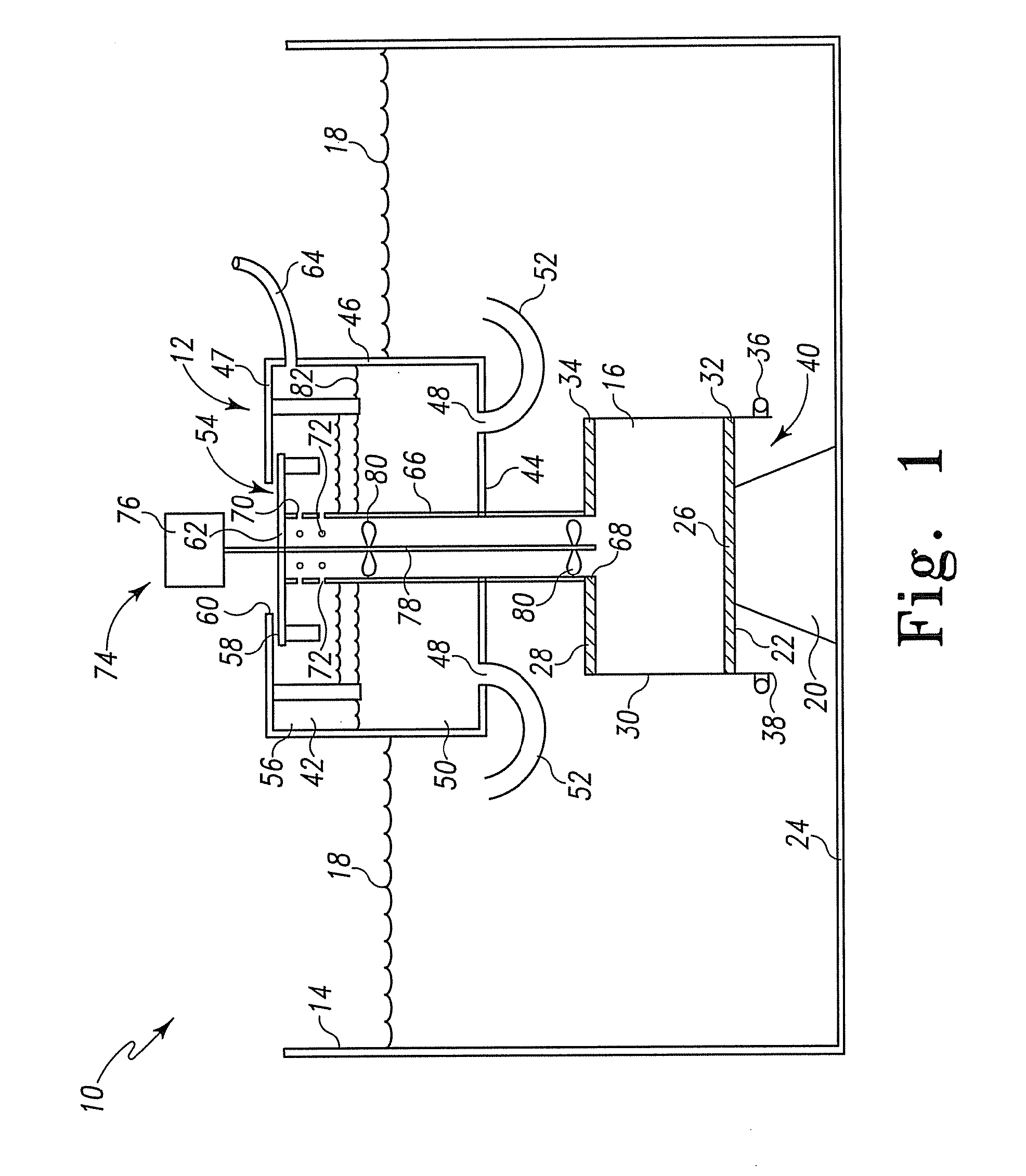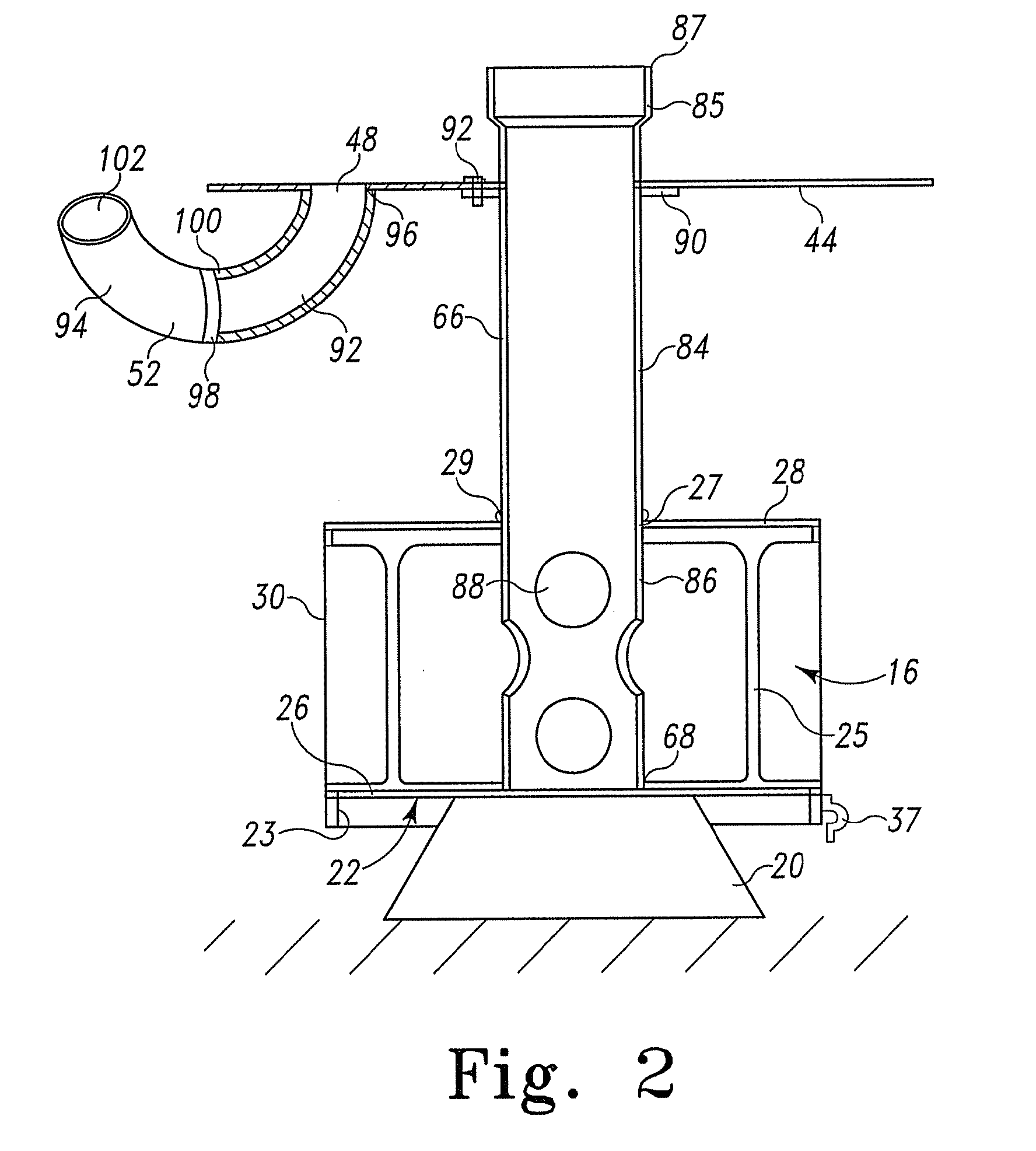System for growing crustaceans and other fish
a technology for crustaceans and other fish, applied in the field of aquaculture systems, can solve the problems of fewer fish available, many of the traditional sources of fish, i.e. lakes, rivers, streams, etc., and the alarming decline of commercial fisheries in the world
- Summary
- Abstract
- Description
- Claims
- Application Information
AI Technical Summary
Benefits of technology
Problems solved by technology
Method used
Image
Examples
Embodiment Construction
[0020]A recirculated marine aquaculture system 10 is shown schematically in FIG. 1 that includes a water treatment unit 12 situated within a fisheries tank 14. The water treatment unit 12 can also be situated in a pool, pond, lake or other body of water with equal effect, and the illustration here of a tank 14 is not intended to be limiting in any way. The water treatment unit 12 has a first chamber 16 that is situated below the water surface 18 in the body of water 14. A stand 20 can be coupled to a bottom surface 22 of the first chamber 16 to space the first chamber 16 above the bottom 24 of the body of water 14. The first chamber 16 has a floor 26 and a ceiling 28 which are made of a material that is generally water impenetrable, such as stainless steel or fiberglass reinforced plastic. A filtering wall 30 connects the floor 26 and ceiling 28. The filtering wall 30 permits water to flow from the body of water in the fisheries tank 14 into the first chamber 16. The filtering wall ...
PUM
| Property | Measurement | Unit |
|---|---|---|
| Fraction | aaaaa | aaaaa |
| Flow rate | aaaaa | aaaaa |
| Size | aaaaa | aaaaa |
Abstract
Description
Claims
Application Information
 Login to View More
Login to View More - R&D
- Intellectual Property
- Life Sciences
- Materials
- Tech Scout
- Unparalleled Data Quality
- Higher Quality Content
- 60% Fewer Hallucinations
Browse by: Latest US Patents, China's latest patents, Technical Efficacy Thesaurus, Application Domain, Technology Topic, Popular Technical Reports.
© 2025 PatSnap. All rights reserved.Legal|Privacy policy|Modern Slavery Act Transparency Statement|Sitemap|About US| Contact US: help@patsnap.com



